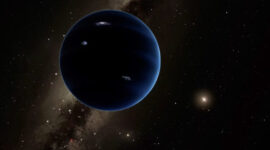Antarctica, the Earth’s southernmost continent, stands as a land of unparalleled extremes, a vast and enigmatic realm that has captivated explorers, scientists, and dreamers for centuries. Derived from the Greek word “antarktike,” meaning “opposite to the Arctic,” this frozen continent encompasses the geographic South Pole and is almost entirely situated south of the Antarctic Circle. More than just a remote and icy wilderness, Antarctica plays a crucial role in the global climate system, holds a unique position in international geopolitics, and harbors a surprisingly diverse array of life adapted to its harsh conditions. This article will delve into the multifaceted nature of Antarctica, exploring its physical geography, climate, unique biodiversity, historical exploration, scientific significance, geopolitical status, and the growing challenges it faces in the Anthropocene.
Physical Geography: A Continent Under Ice
Antarctica is the fifth-largest continent, covering an area of approximately 14.2 million square kilometers (5.5 million square miles), making it larger than Europe and Australia combined. Its most defining feature is the immense Antarctic Ice Sheet, a colossal mass of ice that blankets about 98% of the continent. This ice sheet, formed over millions of years by the accumulation and compression of snowfall, holds approximately 90% of the world’s ice and about 70% of its freshwater reserves. If this ice were to melt entirely, global sea levels would rise by nearly 60 meters (200 feet), a catastrophic event with profound implications for coastal populations worldwide.

The average thickness of the Antarctic Ice Sheet is around 1.9 kilometers (1.2 miles), but it reaches depths of up to 4.8 kilometers (3 miles) in certain areas. The sheer weight of this ice has depressed the continental landmass in many places, with some areas lying significantly below sea level if the ice were removed. This massive ice sheet is not a static entity; it is constantly in motion, flowing outwards towards the coast in the form of vast glaciers and ice streams. Where these glaciers meet the sea, they form ice shelves, large floating platforms of ice that extend from the land over the ocean. The calving of icebergs, the breaking off of large chunks of ice from ice shelves and glaciers, is a natural process in Antarctica, but its rate has become a significant concern in the context of climate change.
Beneath the ice, Antarctica possesses a diverse geological landscape. The continent is broadly divided into East Antarctica and West Antarctica by the Transantarctic Mountains, a formidable mountain range that stretches for over 3,500 kilometers (2,200 miles). East Antarctica is a large, stable craton composed of ancient crystalline rocks, some dating back billions of years. In contrast, West Antarctica is a geologically younger and more complex region, characterized by volcanic activity and a series of mountain ranges and islands largely covered by ice. Mount Vinson, the highest peak in Antarctica at 4,892 meters (16,050 feet), is part of the Ellsworth Mountains in West Antarctica.
Despite the dominance of ice, approximately 2% of Antarctica’s landmass is ice-free. These areas, known as “oases” or “dry valleys,” are found primarily along the coast and in the Transantarctic Mountains. The McMurdo Dry Valleys in Victoria Land are the largest ice-free region in Antarctica and are considered one of the driest places on Earth. Strong katabatic winds, which flow downhill from the high interior, evaporate any snow or ice that might accumulate, leaving behind a stark, desert landscape.
The continent is surrounded by the Southern Ocean, a unique body of water that encircles Antarctica and is characterized by cold temperatures and distinct ocean currents, including the powerful Antarctic Circumpolar Current. This current plays a vital role in regulating global ocean circulation and climate. In winter, a vast expanse of sea ice forms around Antarctica, significantly increasing the continent’s effective size. This sea ice is dynamic, expanding and contracting with the seasons, and it has a profound impact on the marine ecosystem and atmospheric processes.
Climate: The Coldest, Driest, and Windiest Continent
Antarctica holds the record for being the coldest, driest, and windiest continent on Earth. Its extreme climate is primarily due to its high latitude, which results in prolonged periods of darkness during winter and low solar radiation throughout the year. The high albedo (reflectivity) of the ice and snow further reduces the amount of solar energy absorbed by the surface, leading to exceptionally cold temperatures.
The interior of Antarctica experiences the most extreme cold, with average annual temperatures plummeting below -50°C (-58°F). The lowest naturally recorded temperature on Earth was -89.2°C (-128.6°F) at the Vostok Station in East Antarctica. Coastal regions generally experience milder temperatures, with summer averages hovering around 0°C (32°F), although they can occasionally rise above freezing.
Despite the vast quantities of ice, Antarctica is technically a desert due to its extremely low precipitation. The cold air holds very little moisture, resulting in an average annual precipitation of less than 200 mm (8 inches) in coastal areas and significantly less in the interior, often comparable to the Sahara Desert. Most precipitation occurs as snowfall, which accumulates over time to form the massive ice sheet.
Antarctica is also characterized by strong winds, particularly in coastal areas. Katabatic winds, driven by gravity as cold, dense air flows downhill from the high interior, can reach hurricane-force speeds, creating blizzard conditions that can be both dangerous and persistent. The lack of significant landmasses to the north allows for the unimpeded flow of circumpolar winds, further contributing to the continent’s windy nature.
The unique atmospheric conditions over Antarctica also lead to spectacular optical phenomena such as the Aurora Australis (Southern Lights), a dazzling display of light in the night sky caused by the interaction of charged particles from the solar wind with the Earth’s magnetosphere. Other phenomena include sundogs and diamond dust, which occur due to the refraction and reflection of sunlight by ice crystals in the atmosphere.
Biodiversity: Life on the Edge
Despite its extreme conditions, Antarctica is not devoid of life. A remarkable array of organisms has adapted to survive the continent’s harsh environment, both on land and in the surrounding Southern Ocean. Terrestrial life is limited by the cold temperatures, dryness, and lack of liquid water and sunlight. The dominant land organisms are microorganisms such as bacteria, archaea, fungi, algae, and lichens, which can be found in ice-free areas and even within the ice itself. Small invertebrates like mites, nematodes, and tardigrades (water bears) also inhabit these limited terrestrial environments. The Antarctic Peninsula, with its slightly milder climate, supports the only two native flowering plants: Antarctic hair grass and Antarctic pearlwort.
The surrounding Southern Ocean, however, teems with life. The cold, oxygen-rich waters are highly productive, supporting a complex food web. Phytoplankton, microscopic marine algae, form the base of this ecosystem, utilizing sunlight for photosynthesis during the long summer days. They are grazed upon by zooplankton, including vast swarms of Antarctic krill, small crustaceans that are a keystone species in the Southern Ocean food web. Krill serve as a primary food source for a wide range of animals, including whales, seals, penguins, seabirds, and fish.

Antarctica is famous for its iconic wildlife, particularly penguins. Several species of penguins breed on the Antarctic continent and its surrounding islands, including Emperor penguins, the largest penguin species, and Adélie penguins. Other penguin species found in the region include Chinstrap, Gentoo, and Macaroni penguins. Seals are also abundant, with species like Weddell seals, crabeater seals, leopard seals, and elephant seals inhabiting the ice and waters around Antarctica.
The Southern Ocean is home to numerous species of whales, including baleen whales like humpback, blue, and fin whales, which migrate to Antarctic waters during the summer to feed on krill. Toothed whales, such as orcas and sperm whales, are also found in the region. Various seabirds, including albatrosses, petrels, skuas, and terns, breed on Antarctic land and islands, relying on the rich marine resources for food.
The unique adaptations of Antarctic life to the extreme cold are fascinating. Many marine animals have evolved antifreeze proteins in their blood to prevent ice crystal formation. Some terrestrial invertebrates can survive freezing temperatures by entering a state of suspended animation. The dense fur or blubber of seals and whales provides insulation against the cold. The dark plumage of penguins helps them absorb solar radiation, while their streamlined bodies and flippers are adapted for efficient swimming in icy waters.
Historical Exploration: A Continent Revealed
The existence of a large southern landmass was hypothesized by ancient Greek philosophers to balance the landmasses in the Northern Hemisphere. This hypothetical continent, Terra Australis Incognita (unknown southern land), appeared on maps for centuries before Antarctica was actually sighted. While there are some disputed claims of earlier sightings, the generally accepted discovery of Antarctica occurred in 1820 during a Russian expedition led by Fabian Gottlieb von Bellingshausen and Mikhail Lazarev.
The 19th century saw further exploration by seal hunters and scientific expeditions, gradually revealing the outlines of the continent. Notable early explorers include James Clark Ross, who discovered the Ross Sea, Ross Ice Shelf, and Mount Erebus during his British expeditions in the 1840s. However, the interior of Antarctica remained largely unknown and presented a formidable challenge to explorers due to its extreme conditions.
The early 20th century marked the heroic age of Antarctic exploration, with expeditions vying to reach the South Pole. The epic race between Norwegian Roald Amundsen and Briton Robert Falcon Scott in 1911-1912 captured the world’s imagination. Amundsen’s team ultimately reached the South Pole first in December 1911, while Scott’s team arrived weeks later and tragically perished on their return journey.
Other significant expeditions during this era included Ernest Shackleton’s remarkable survival story after his ship, the Endurance, was crushed by ice during the Imperial Trans-Antarctic Expedition (1914-1917). Richard E. Byrd’s American expeditions in the mid-20th century utilized aircraft for aerial surveys, significantly expanding our knowledge of the continent’s geography.
The establishment of permanent research stations during the International Geophysical Year (1957-1958) marked a shift from exploration to scientific investigation. Since then, numerous countries have established research bases across Antarctica, contributing significantly to our understanding of the continent and its global importance.
Scientific Significance: A Natural Laboratory
Antarctica serves as a unique and invaluable natural laboratory for a wide range of scientific disciplines. Its pristine environment and extreme conditions provide opportunities for research that are not available elsewhere on Earth.
Glaciologists study the Antarctic Ice Sheet to understand its past behavior and predict its future response to climate change. Ice cores drilled deep into the ice sheet provide a detailed record of past climate conditions, atmospheric composition, and volcanic activity stretching back hundreds of thousands of years. This information is crucial for understanding natural climate variability and assessing the impact of human activities on the global climate system.
Geologists investigate the continent’s underlying rock formations to reconstruct its tectonic history and its role in the breakup of the supercontinent Gondwana. They also study meteorites found in Antarctica, which are often well-preserved in the ice and provide insights into the early solar system.
Biologists explore the remarkable adaptations of life in Antarctica, from the molecular mechanisms that allow organisms to survive extreme cold to the structure and function of the Southern Ocean ecosystem. Research on Antarctic organisms can have implications for understanding life in other extreme environments, including potential extraterrestrial habitats.
Atmospheric scientists study the unique atmospheric processes over Antarctica, including the formation and depletion of the ozone layer. The discovery of the Antarctic ozone hole in the 1980s highlighted the global impact of human-produced chemicals and led to international efforts to protect the ozone layer.
Oceanographers investigate the dynamics of the Southern Ocean, its role in global ocean circulation, and its influence on climate. They study the impact of melting ice shelves and sea ice on ocean salinity, temperature, and currents, as well as the effects of ocean acidification on marine ecosystems.
Space scientists utilize the high, dry, and stable conditions in certain parts of Antarctica for astronomical observations. The clear atmosphere and long periods of darkness during winter make it an ideal location for telescopes studying the universe.
Geopolitical Status: A Continent of Peace and Science
Antarctica has a unique geopolitical status governed by the Antarctic Treaty System (ATS), a collection of agreements that regulate international relations with respect to the continent. The Antarctic Treaty, signed in 1959 and entered into force in 1961, is the cornerstone of the ATS.
The treaty’s key provisions include:
- Peaceful Use: Antarctica shall be used for peaceful purposes only; any measure of a military nature is prohibited.
- Freedom of Scientific Investigation: Freedom of scientific investigation in Antarctica and cooperation toward that end shall continue.
- Prohibition of Territorial Claims: No act or activity taking place while the present Treaty is in force shall constitute a basis for asserting, supporting, or denying a claim to territorial sovereignty in Antarctica or create any rights of sovereignty in that region. No new claim, or enlargement of an existing claim, to territorial sovereignty in Antarctica shall be asserted while the present Treaty is in force.
- Nuclear-Free Zone: The treaty prohibits nuclear explosions and the disposal of radioactive waste in Antarctica.
The Antarctic Treaty has been remarkably successful in maintaining peace and promoting scientific cooperation on the continent. It has been acceded to by over 50 states, representing a significant portion of the global community. The ATS has expanded over time with the addition of other agreements, including the Convention for the Conservation of Antarctic Seals (1972) and the Convention on the Conservation of Antarctic Marine Living Resources (CCAMLR) (1980), which aim to protect the unique biodiversity of the Southern Ocean.
The Protocol on Environmental Protection to the Antarctic Treaty (the Madrid Protocol), which entered into force in 1998, further strengthens environmental protection in Antarctica. It designates Antarctica as a natural reserve devoted to peace and science and prohibits all mining activities indefinitely.
Despite the success of the ATS, the long-term future of Antarctica’s governance faces potential challenges, particularly regarding resource management and the implications of climate change. As ice melts and access to the continent potentially becomes easier, pressures for resource exploitation, such as fishing and bioprospecting, may increase.
Challenges in the Anthropocene: A Continent Under Threat
Antarctica is not immune to the impacts of the Anthropocene, the current geological epoch characterized by significant human influence on the Earth’s systems. Climate change poses a profound threat to the continent’s fragile environment.
Rising global temperatures are causing significant changes in Antarctica’s ice sheets and ice shelves. West Antarctica, in particular, is experiencing accelerated ice loss, contributing to global sea-level rise. The Thwaites Glacier, often referred to as the “Doomsday Glacier” due to its potential for significant ice loss, is a major area of concern. Warming ocean waters are melting ice shelves from below, weakening them and making them more susceptible to calving.
Changes in sea ice extent and thickness are also impacting the Antarctic ecosystem. Sea ice provides crucial habitat for many species, including krill and penguins. Reductions in sea ice can disrupt the food web and threaten the survival of these iconic animals.
Ocean acidification, caused by the absorption of excess carbon dioxide from the atmosphere into the ocean, is another significant threat. The cold waters of the Southern Ocean are particularly susceptible to acidification, which can harm marine organisms with calcium carbonate shells and skeletons, such as krill and some types of plankton, further disrupting the marine food web.
Human activities in and around Antarctica, such as tourism and scientific research, also have the potential to impact the environment. While managed under strict guidelines, these activities can lead to localized pollution, disturbance of wildlife, and the introduction of non-native species.
The future of Antarctica is inextricably linked to global efforts to mitigate climate change and ensure responsible environmental stewardship. The continent’s fate has significant implications for the entire planet, from sea-level rise to the stability of global climate systems and the preservation of its unique biodiversity.
In conclusion, Antarctica, the world’s southernmost continent, is a land of breathtaking beauty and extreme conditions, a realm dominated by ice yet harboring a surprising diversity of life. Its physical geography, shaped by a colossal ice sheet, dictates its frigid and arid climate. Historically a frontier of exploration, Antarctica has transformed into a vital hub for scientific research, providing crucial insights into our planet’s past, present, and future. Governed by the unique Antarctic Treaty System, it stands as a testament to international cooperation for peace and science.
However, Antarctica faces unprecedented challenges in the Anthropocene. The impacts of climate change, including ice loss and ocean acidification, threaten its fragile ecosystems and contribute to global sea-level rise. Preserving Antarctica’s unique environment and ensuring its continued role as a scientific reserve requires sustained international cooperation and a global commitment to addressing climate change. As we move further into the 21st century, the fate of this extraordinary continent will have profound consequences for the entire world, underscoring the urgent need for its careful stewardship.




